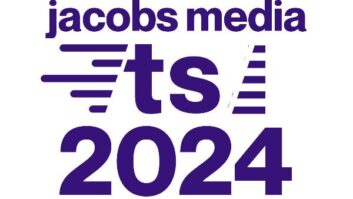No piece of equipment in the broadcast studio of the 1960s and ’70s was more used and abused than the cart machine. It was subjected to an endless barrage of carts with commercials, jingles and news actualities by heavy- handed DJs. The endless-loop tape cartridge machine, with its ability to play short audio clips, was part of what made the top 40 and all-news formats possible.
From its inception in 1959, the Broadcast Electronics Spotmaster 500 was synonymous with the term cart machine. Automatic Tape Control Inc. (ATC) of Bloomington, Ill., and Tapecaster TCM Inc., located in Rockville, Md., were among early competitors, but Spotmasters seemed to be everywhere. A few are still in use, providing service to small-market and college broadcasters over 30 years after they were built.
Keeping it clean
Although a giant in the radio industry today, Broadcast Electronics had humble origins. Founded in 1959 by engineers at WWDC(AM) in Silver Spring, Md., the original manufacturing facilities were located in a garage next to the station.
For many years the company had only one product, cart machines. In 1977, BE left the Washington area for the rolling hills of Quincy, Ill., where it expanded and diversified its offerings. Broadcast Electronics entered the RF transmission business in 1979 with the introduction of the FX30 exciter.
(click thumbnail)The earliest Spotmaster cart machines were manufactured with wooden cases. This one is from the collection of Tim Bealor at Broadcast Electronics. Note Cold War-era atomic logo. The “Spotmaster 500” name was used for several models in the early years, leading to some confusion when it came time to order parts. The first 500s can be identified by a rounded cabinet and the spring-loaded start switch on the right side of the machine. The earliest record decks were hybrids, with transistorized playback and cue amps, and vacuum tubes on the record amp PC board. A rack-mount version of the machine also was available.
Next-generation 500s had the familiar square cabinet with Start and Stop pushbuttons on the front, and all solid-state electronics.
Inputs and outputs on the early Spotmasters were unbalanced, with connections via 1/4-inch phone jacks. Remote start, stop and record preset were made through an octal socket.
Throughout most of its life, the transport mechanism for Spotmasters was manufactured by Viking. The Broadcast Electronics deck was virtually identical to the transports that Viking provided to Tapecaster for their cart machines.
Although ruggedly constructed, Spotmasters required frequent visits to the shop to maintain good operating condition. Despite installation instructions to the contrary, many cart machines were located on top of vacuum tube consoles. The resultant heat made short order of electrolytic caps and dried-out lubricants. Moving parts simply wore out.
Regular maintenance duties included vacuuming out dust and debris, replacing belts, cleaning pulleys and lubricating the motor. A rhythmic thumping sound when the machine was in play indicated the flywheel was past its prime and ready to be replaced. Regular disassembly of the Papst or Hurst drive motors and lubrication with Wynn’s Friction Proofing Oil kept them running smoothly.
Mechanical alignment of the deck included a screwdriver adjustment to set the striking angle of the pinch roller, positioning the head bracket, setting the pressure of the pinch roller and clearance of the flywheel thrust bearing. Head alignment on the early machines involved inserting a special flat wrench behind the head and slowly rocking it while playing an alignment cart. The process could best be described as slow torture.
Later BE introduced a head bracket with Allen wrench adjustments for height and azimuth, making head alignment a more scientific procedure.
The first-generation Spotmasters had no adjustments on the playback and cue amps, and only bias level and frequency on the record amps. Later machines had the expected assortment of trimpots and tweakers.
The basic 500 record and playback machines are best remembered, but the company also made limited runs of other machines in the series. In the early ’60s, the 500 DA was introduced. It had a front-panel speaker and headphone jack, and was used to audition carts without tying up a production room. An even rarer item was the variable speed 500, which also featured a fast-forward function.
Beginning of the end
The Spotmaster 500 series was in production for many years, but advancing technology and changing times eventually took their toll. Direct drive cart machines were introduced, eliminating the troublesome belts and flywheel, and giving better performance in the process. Stations started putting music on carts, and a stereo cartridge standard was introduced.
BE responded with the release of the Ten/70 family of machines, with advanced features such as automatic fast forward, self-cancelling record pre-set and solid-state logic switching. At the same time, the 303C and 305C multicartridge decks were introduced. These machines were followed by the Series 2000 and 3000, along with a host of other models.
In 1990 BE released the AudioVault line of hard-disk storage systems. The company ceased production of cart machines in 1995.
The Spotmaster 500 was manufactured from 1959 through the early 1980s. Neil Glassman, vice president of strategic marketing for BE, notes that full support for the product was provided for approximately 15 years after is was discontinued.
While a few of the Spotmaster machines live on, their days may be numbered. Broadcast Electronics continues to sell the replacement parts they have on hand, but stock on some items has been exhausted.
“Nearly all of the parts that we at one time supplied for the 500 series cart machines have been discontinued by our suppliers, including the motors, the heads, the belts and especially many of the ICs,” said Tim Bealor, vice president of RF systems and a long-time executive for the manufacturer.
“We still are able to supply pressure rollers, but not much more than that. As far as I know, there are no after market parts suppliers, unless someone was to go online and search for … old-time broadcast distributors who used to keep stock of some of those items. We are no longer able to access them.
“We will continue to answer technical questions concerning the products, and we do keep documentation on hand, but supplying parts has gotten to be more and more difficult. I’m not sure we will be able to do that in any capacity much longer.”













